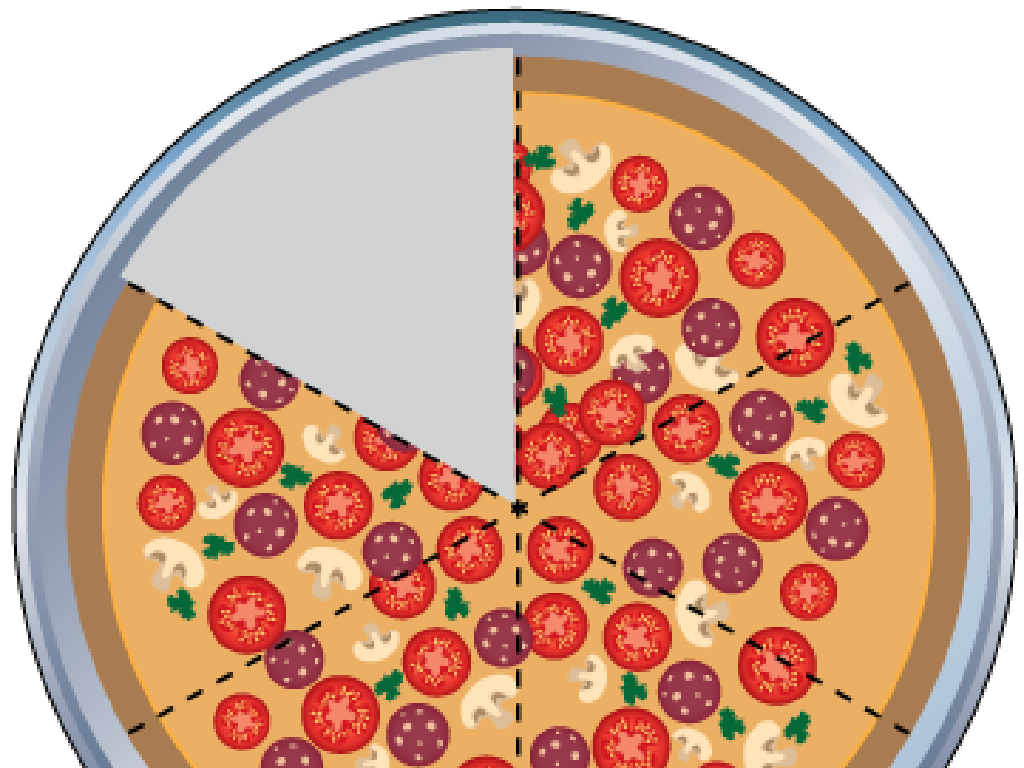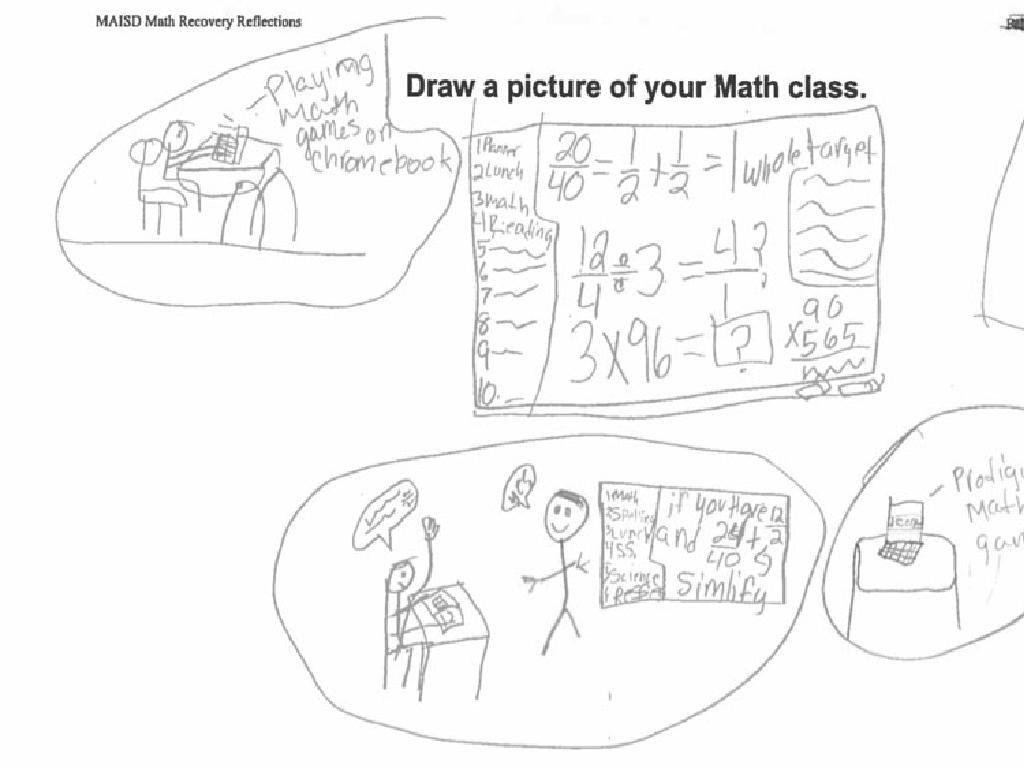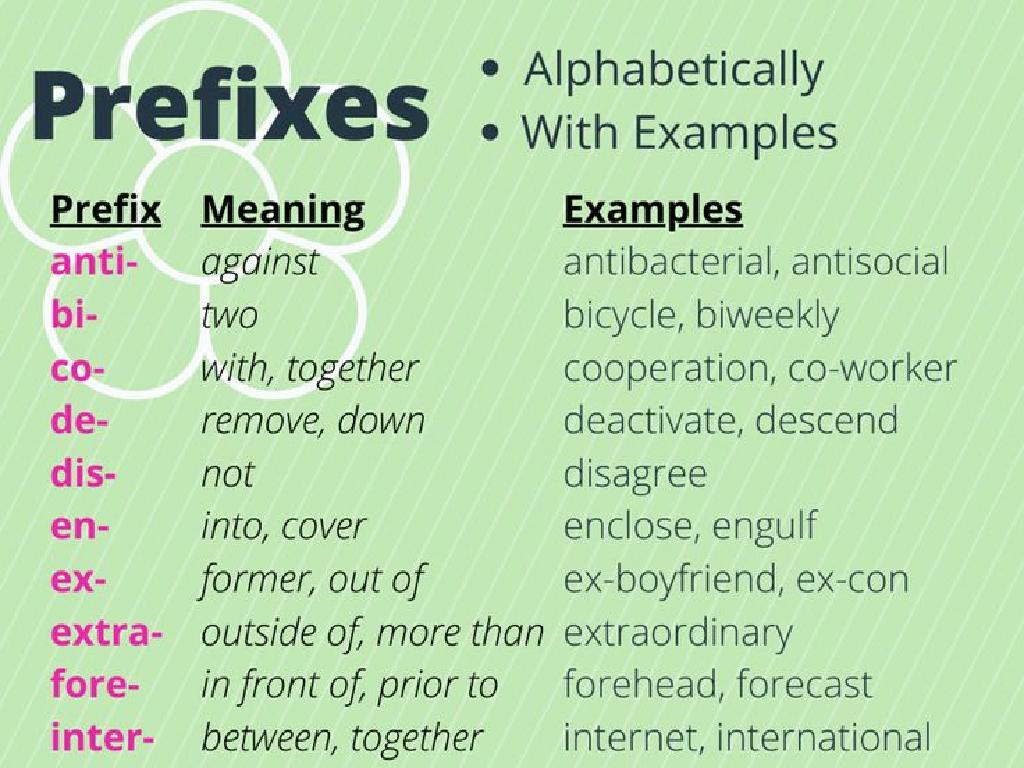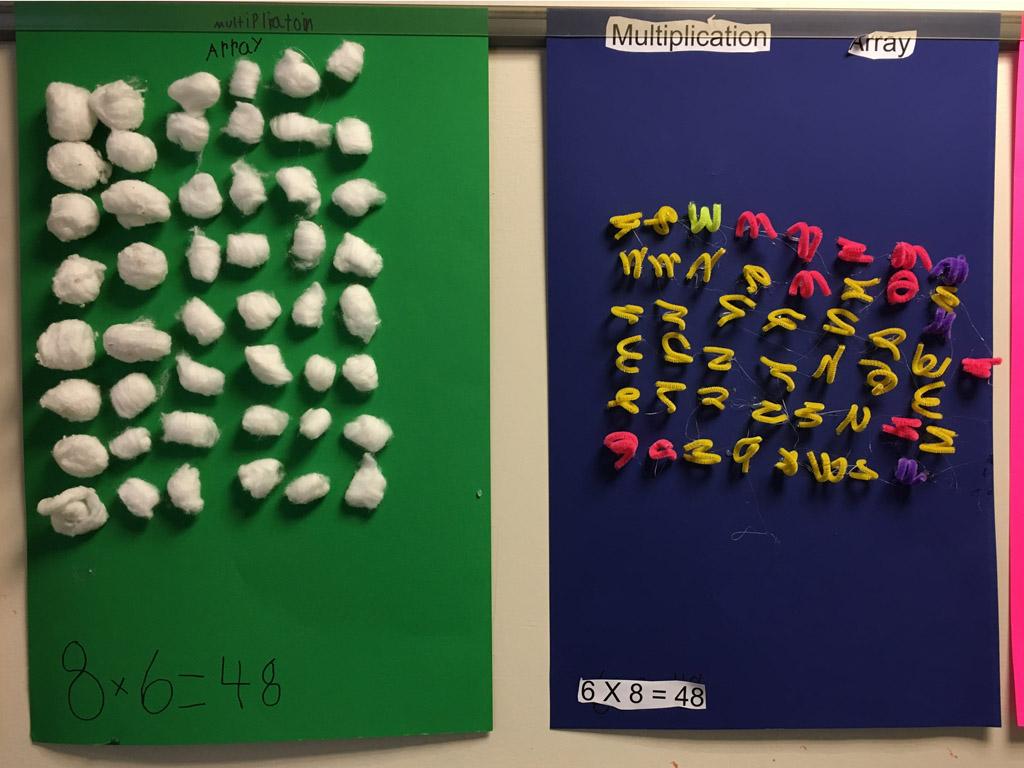Parallel Sides In Quadrilaterals
Subject: Math
Grade: Third grade
Topic: Quadrilaterals
Please LOG IN to download the presentation. Access is available to registered users only.
View More Content
Parallel Sides in Quadrilaterals
– What are parallel sides?
– Lines that never meet, no matter how long they extend
– Quadrilaterals in daily life
– Think of floor tiles and picture frames!
– Characteristics of quadrilaterals
– Four sides & angles, with some sides parallel
– Identifying quadrilaterals
|
Begin the lesson by explaining the concept of parallel sides as lines that run alongside each other but never intersect. Use everyday objects like floor tiles or picture frames to illustrate quadrilaterals in real life, making the concept relatable. Discuss the characteristics of quadrilaterals, emphasizing that they have four sides and angles, and sometimes have parallel sides. Encourage students to identify and name different quadrilaterals they know, fostering interaction and engagement. This will set the foundation for understanding more complex geometric concepts.
Exploring Quadrilaterals
– Quadrilaterals: four-sided shapes
– Examples: squares, rectangles, trapezoids
– Squares have equal sides, rectangles have equal opposite sides, trapezoids only one pair of parallel sides
– Quadrilaterals have 4 sides
– Each quadrilateral has a unique shape
– Compare shapes to see how they differ
|
This slide introduces the concept of quadrilaterals to third-grade students. Emphasize that all quadrilaterals have four sides, which is what the term ‘quadrilateral’ means. Show them various examples like squares, rectangles, and trapezoids, and point out the differences in their shapes. Explain that while they all share the common feature of having four sides, the length of the sides and the angles between them can vary. This will set the foundation for understanding more complex properties of quadrilaterals, such as parallel sides, in later lessons. Encourage students to draw their own quadrilaterals and identify the shapes they see around the classroom or at home.
Identifying Parallel Sides in Quadrilaterals
– What are parallel sides?
– Lines that run side by side and never touch
– Finding parallels in a rectangle
– Look at a rectangle’s opposite sides
– Parallel sides stay apart
– They’re like train tracks, always the same space apart
– Practice with different quadrilaterals
|
This slide introduces the concept of parallel sides within quadrilaterals, specifically for a third-grade math class. Begin by explaining that parallel sides are like the rails of a train track, always running alongside each other but never meeting. Use a rectangle to show this concept clearly, as it has two pairs of parallel sides that are easy to identify. Emphasize that parallel sides are equidistant, meaning they are always the same distance apart. Encourage students to look for and draw parallel sides in various quadrilaterals, such as squares, rectangles, and parallelograms, to reinforce the concept. Provide hands-on activities where students can use rulers or strips of paper to visualize and maintain equal distances between parallel sides.
Parallel Sides in Squares and Rectangles
– Squares have 2 parallel side pairs
– Rectangles also have 2 parallel side pairs
– Identifying parallel sides in a square
– Opposite sides are equal and parallel in squares
– Drawing and marking a rectangle’s parallel sides
– Use a ruler to draw a rectangle and color the parallel sides the same
|
This slide introduces the concept of parallel sides within the context of familiar shapes: squares and rectangles. Emphasize that in both squares and rectangles, the opposite sides are parallel, which means they never meet no matter how far they are extended. Use visual aids to help students identify these sides in a square. For the rectangle, encourage students to draw their own and use colors or markings to highlight the parallel sides. This activity will reinforce their understanding of parallelism and how it applies to specific quadrilaterals. In the next class, ask students to bring their drawings and discuss the properties they observed.
Parallel Sides in Rhombuses and Parallelograms
– Rhombuses have parallel sides
– Just like a rectangle, all sides are parallel in pairs
– Parallelograms have parallel sides
– A parallelogram’s opposite sides are parallel and equal
– Comparing rhombus and rectangle
– How are a rhombus’s sides like a rectangle’s? They’re both parallel!
– Exploring parallelogram sides
– Let’s look at how each side of a parallelogram relates to the others
|
This slide introduces students to the concept of parallel sides within specific quadrilaterals: rhombuses and parallelograms. Emphasize that both shapes have two pairs of parallel sides. Draw comparisons between the parallel sides of a rhombus and a rectangle to help students understand the concept of parallelism. Use visual aids to show that in a parallelogram, opposite sides are not only parallel but also of equal length. Encourage students to observe these properties in real-life objects that resemble these shapes. The goal is to solidify their understanding of parallel sides in quadrilaterals through comparison and hands-on exploration.
Parallel Sides in Trapezoids
– Trapezoids have one parallel side pair
– A trapezoid is a 4-sided figure with just one pair of sides that never meet.
– Spotting parallel sides in trapezoids
– Look for the longest sides that run in the same direction.
– Non-parallel sides in trapezoids
– The other two sides are not parallel and will meet at a point if extended.
|
This slide introduces students to the concept of parallel sides within trapezoids, a specific type of quadrilateral. Emphasize that unlike other quadrilaterals, trapezoids are unique because they only have one pair of parallel sides. Encourage students to identify these sides by looking for the ones that are the same distance apart and never meet, no matter how long they are extended. Point out that the other sides of a trapezoid are not parallel and will eventually meet if they were to be extended. Use diagrams to visually demonstrate these concepts and consider bringing in physical models or using the classroom’s whiteboard to draw examples. This will help cater to visual learners and make the concept more tangible.
Finding Parallel Sides in Real Life
– Quadrilaterals around us
– Think of a door or a book. They are quadrilaterals!
– Discover parallel sides in objects
– Look at a table or a window to find parallel sides.
– Recognizing shapes in the world
– Importance of parallel sides
– Knowing about parallel sides helps us identify and classify shapes.
|
This slide aims to help students identify quadrilaterals in their everyday environment and understand the concept of parallel sides. Encourage the students to think of objects they interact with daily that have four sides, like books, doors, or tables. Guide them to observe these objects and find pairs of sides that never meet, no matter how far they are extended. This practical approach to recognizing parallel sides in familiar objects will enhance their grasp of geometric concepts and their ability to classify shapes based on their properties. During the presentation, engage the students by asking them to share examples of quadrilaterals they’ve found and discuss the parallel sides of those shapes.
Class Activity: Parallel Side Hunt
– Let’s hunt for quadrilaterals
– Identify parallel sides on objects
– Look for objects with opposite sides that don’t meet
– Draw the shapes you find
– Use paper to sketch the quadrilaterals
– Mark the parallel sides
– Use a ruler to draw straight lines and arrows to show parallel sides
|
This activity is designed to help students recognize quadrilaterals and understand the concept of parallel sides in a fun and interactive way. Encourage the students to explore the classroom and find real-life examples of quadrilaterals such as books, tables, or windows. Once they find an object, they should draw it on paper and use a ruler to accurately represent the parallel sides. Teachers should circulate the room to assist students in identifying parallel sides and to ensure they understand why those sides are considered parallel. This hands-on activity not only reinforces the concept of parallelism but also enhances their observational and drawing skills. Prepare to discuss the findings as a class afterward, and praise successful identification and representation of parallel sides.
Review: Parallel Sides in Quadrilaterals
– Quadrilaterals have parallel sides
– Like the opposite sides of a rectangle
– Knowing shapes helps us understand the world
– Shapes are everywhere! Buildings, books, and more
– Spotting parallel sides in daily life
– You did a fantastic job learning today!
|
In today’s lesson, we’ve learned that quadrilaterals are four-sided shapes with sides that can be parallel, like rectangles and squares. Understanding the properties of shapes, including parallel sides, is crucial as it helps us recognize and make sense of the various structures and patterns we see every day. Encourage the students to observe their surroundings and identify shapes with parallel sides, such as doors, windows, and books, to reinforce their learning. Congratulate the class on their hard work and curiosity throughout the lesson. For the next class, prepare some real-life examples or pictures of quadrilaterals to help students better visualize and relate to the concept.





